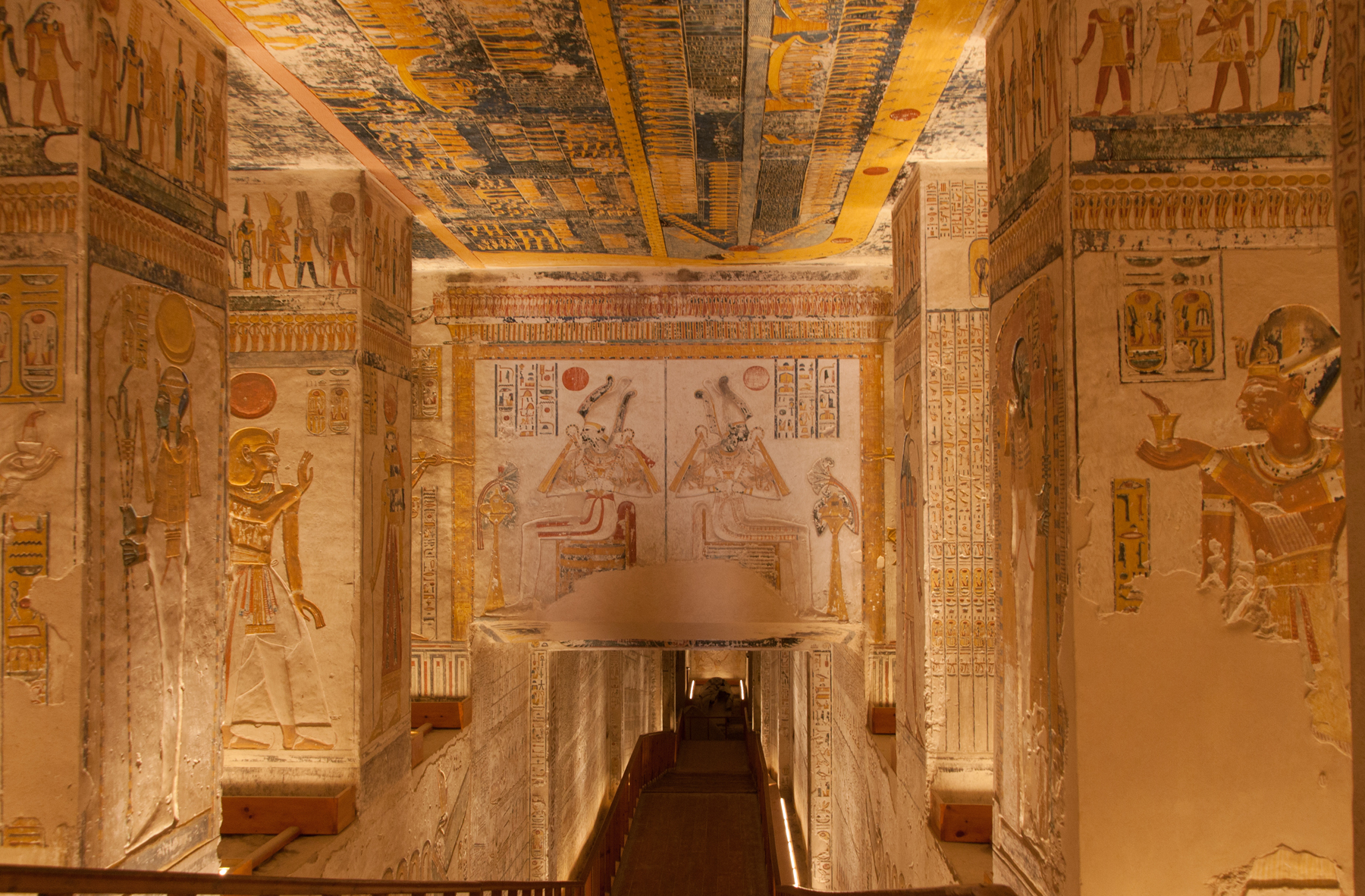Highlights
- See tombs of the great pharaohs at the Valley of the Kings
- See the funerary monument of the pharaoh woman ruler of Egypt (Queen Hatshepsut)
- Wander in Ramesseum and Habu Temples
- Explore the tombs of the Artists of Deir El Madina Village
Itinerary
In the morning, you will be picked up in an air-conditioned vehicle from your hotel in Luxor. Accompanied by a Private Licensed guide, you will be taken to the following archaeological sites:
It is a valley in Western Luxor where tombs were the Pharaohs of the New Kingdom of Ancient Egypt built their luxury tombs as a passage to the Devine afterlife. The valley stands on the west bank of the Nile and consists of two valleys, East and West, with the majority of the royal tombs situated in the East Valley.
It is a place where wives and sons of the pharaohs were buried during the New Kingdom era in ancient times. It was also known as Ta-Set-Neferu, meaning ‘the place of the beauty. The valley is located near the Valley of the Kings. Here, along with the queens of the 18th, 19th, and 20th dynasties, many princes and princesses were also buried especially the Sons of Ramsess II.
Also known as ‘Dier El Bahari temple, it was established by Queen Hatshepsut, the powerful woman who ruled Egypt during the 18th. Dynasty. As you approach it from the distance, it is as of you are looking at a modern building that has been carved out of a mountain.
It is a funerary temple of King Ramesses II. On its walls is recorded the famous battle of Qadesh. Ramsess II built his fabulous mortuary temple on the site of Seti I’s ruined temple where he identified himself with the local form of the god, Amun. The remains of the complex include a royal palace and a large number of mud-brick granaries and storerooms, as well as a small temple dedicated to Ramesses’ mother Tuya, and wife Nefertari.
It is the funerary temple of King Ramesses III with military and religious motifs. The entire Temple of Ramses III, the palace, and other annexes represent a small town enclosed within a defensive wall. Entry is through the High gate, or Migdol, which, in appearance resembles an Asiatic fort. Just inside the High gate, to the south, are the chapels of Amenirdis I, Shepenwepet II, and Nitoket, wives of the god Amun. To the north side is the chapel of Amun. These chapels were a later addition dating to the 18th Dynasties, by Hatshepsut and Tutmosis III. Close to the temple are the remains of a Nilometer. These ‘flood warnings’ were positioned strategically along the river to determine the water level of the river every year.
It is a community of workmen and their families, supervisors, and foremen and their families, all dedicated to building the great tombs of the pharaohs at the valley of the kings.
You will be served lunch during this tour. After exploring the historical sites, you will be dropped back to your hotel in Luxor.
Inclusions:
- Hotel pick up and drop off in an air-conditioned coach
- Transportation in an air-conditioned vehicle
- English, French, Italian & German speaking guide
- Entrance fees to the archaeological sites
- Lunch at Restaurant
Exclusions:
- Extra Visits
- Personal extras such as Beverages
- Tipping & Service charges
Prices:
| Persons Count | 1 | 2-3 | 4-7 | 8-14 |
| Price/Person | $190 | $120 | $95 | $85 |
Cancellation Policy:
For a full refund, cancel at least 24 hours in advance of the start date of the experience. Learn more about cancellations.
Covid-19 Info.Hello Traveler,First, a big thank you for traveling in Egypt with Blue Heaven Travel!Your safety always comes at the forefront of our priorities. We have taken all the possible safety precautions to ensure that your trip is Safe & stress-free.More Details…… |


